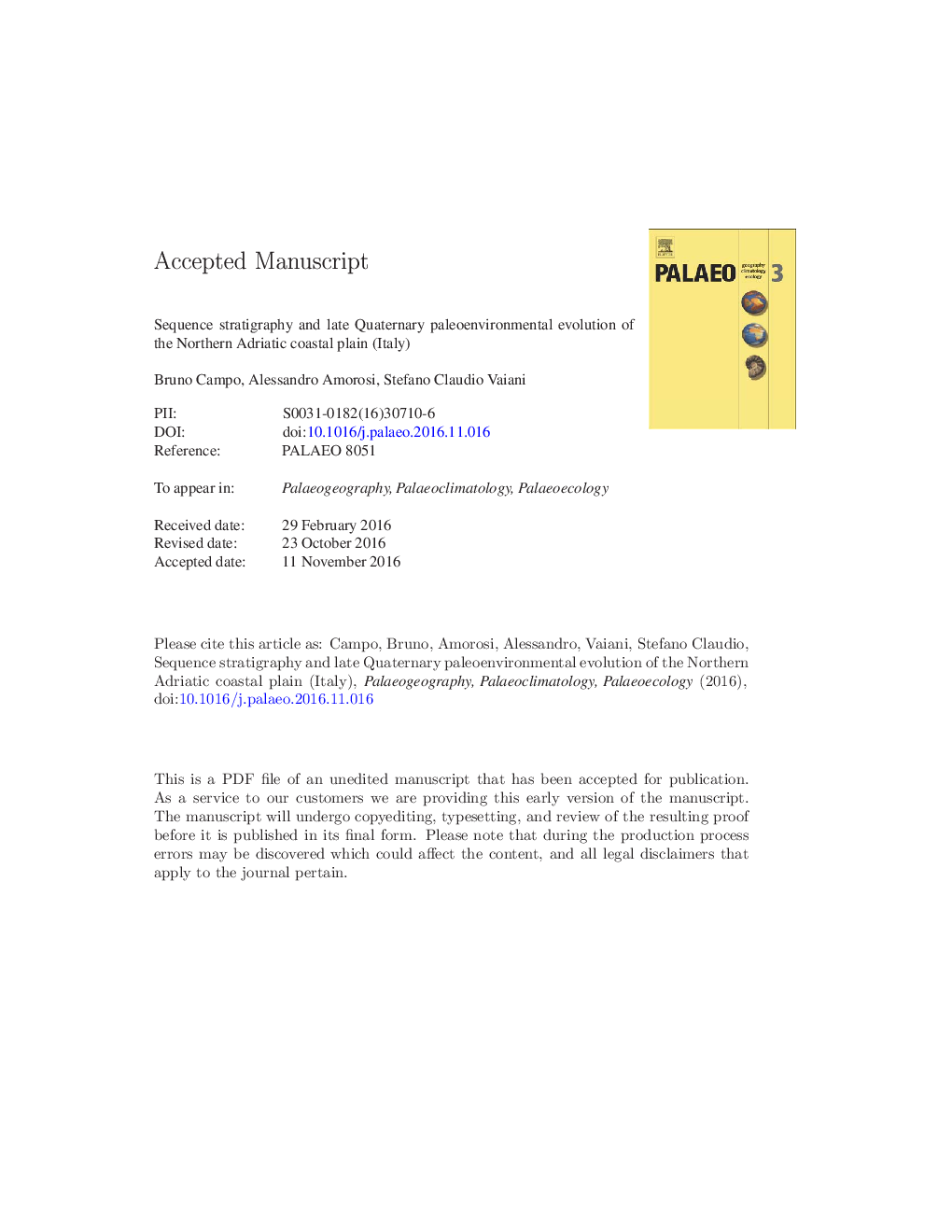| کد مقاله | کد نشریه | سال انتشار | مقاله انگلیسی | نسخه تمام متن |
|---|---|---|---|---|
| 5756036 | 1622126 | 2017 | 50 صفحه PDF | دانلود رایگان |
عنوان انگلیسی مقاله ISI
Sequence stratigraphy and late Quaternary paleoenvironmental evolution of the Northern Adriatic coastal plain (Italy)
دانلود مقاله + سفارش ترجمه
دانلود مقاله ISI انگلیسی
رایگان برای ایرانیان
کلمات کلیدی
موضوعات مرتبط
مهندسی و علوم پایه
علوم زمین و سیارات
فرآیندهای سطح زمین
پیش نمایش صفحه اول مقاله

چکیده انگلیسی
Integrated sedimentological and micropaleontological data were used for the construction of a 93 km-long stratigraphic cross-section parallel to the modern Adriatic shoreline (northern Italy). The stratigraphic panel shows, for the first time, along-strike changes in facies architecture. The Late Pleistocene succession consists of well-drained floodplain deposits. Multi-storey fluvial-channel bodies, ~ 20 m thick, are correlative with a paleosol that formed in response to sea-level fall and river incision at the onset of the Last Glacial Maximum (MIS 3/2). Another paleosol (12.5-10 kyr cal BP), associated with the Younger Dryas cold event, marks the transition to overlying Holocene coastal facies. In terms of sequence stratigraphy, the lower paleosol represents the sequence boundary and the correlative, amalgamated channel-belt deposits form the lowstand systems tract. The transgressive surface coincides with a weakly-developed paleosol (18.5-16 kyr cal BP) that marks a major phase of channel abandonment induced by early sea-level rise. The Younger Dryas paleosol allows subdivision of the transgressive systems tract (TST) into lower and upper TST. The lower TST, well developed in the south, is characterized by thin poorly-drained floodplain deposits; the upper TST, showing vertical transition to coastal and shallow-marine clays, has diagnostic 'marine' signature, and is laterally continuous, with no significant thickness changes. The maximum flooding surface marks the turnaround from a deepening-upward to shallowing-upward trend. The highstand systems tract includes a prograding succession of prodelta clays and overlying delta-front/beach-ridge sands, which form a laterally continuous sedimentary body. Nearshore sands accumulated in prograding delta systems characterized by wave-dominated, arcuate geometries, with transition to laterally continuous strandplains.
ناشر
Database: Elsevier - ScienceDirect (ساینس دایرکت)
Journal: Palaeogeography, Palaeoclimatology, Palaeoecology - Volume 466, 15 January 2017, Pages 265-278
Journal: Palaeogeography, Palaeoclimatology, Palaeoecology - Volume 466, 15 January 2017, Pages 265-278
نویسندگان
Bruno Campo, Alessandro Amorosi, Stefano Claudio Vaiani,